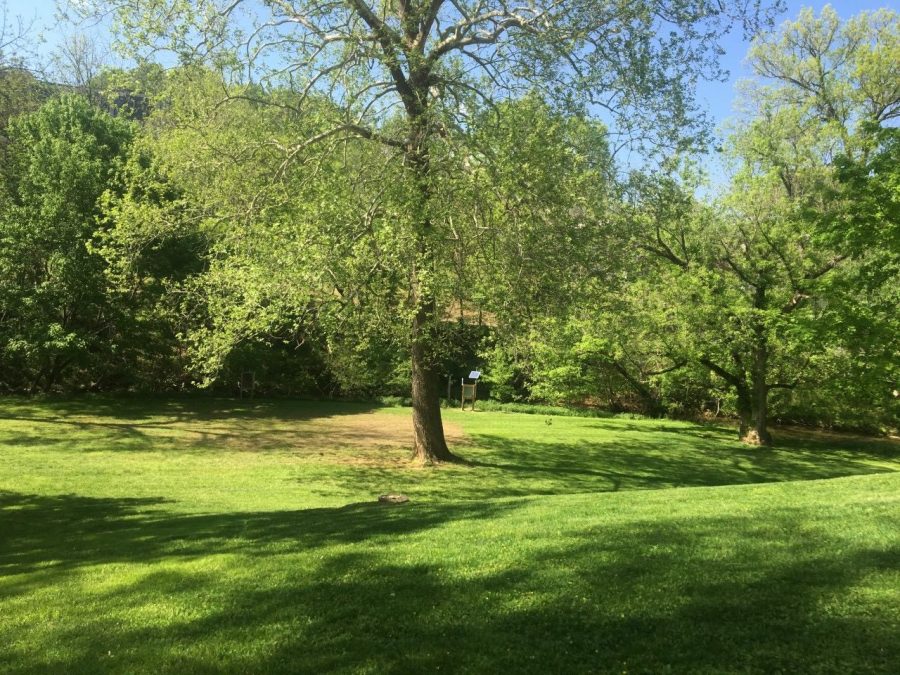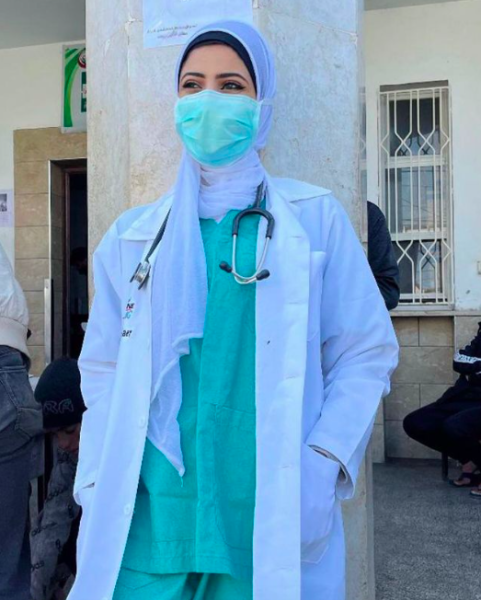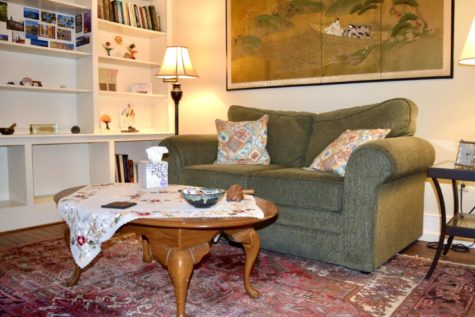Bringing the classroom outdoors
The new outdoor classroom will provide an intimate, purposeful space for learning next fall
The outdoor classroom will be located in the dell behind Leyburn Library, near Woods Creek. Photo by Irina Koleva, ’22.
May 7, 2019
Next fall, Washington and Lee faculty will be able to teach classes outdoors, allowing them to conduct classes while enjoying the campus’s bountiful greenery and nature.
The dell below Leyburn Library will be turned into an outdoor classroom that will incorporate wireless technology, writing surfaces and movable furniture. This project is part of the university’s new strategic planning initiatives centered around sustainability and environmental stewardship.
Lisa Greer, head of the geology department, has been at the forefront of this project.
“There are some great bene ts to teaching and learning in an outdoor setting. Plenty of our professors teach outside, but we don’t have any designated area that we can call a classroom,” Greer said.
Learning outdoors has been proven to result in a significant increase in attention and engagement in students. The change in scenery provided by an outdoor classroom provides students with the opportunity to learn outdoors.
Studies have shown that teaching and learning outdoors is more enjoyable, interactive and invigorating than doing so indoors. Sitting inside the same artificially lit room for the entire semester is draining. The classroom environment is unchanging, which encourages boredom.
In contrast, outdoor classrooms are out in the openair, surrounded by greenery. Sounds of nature, like birds chirping and leaves rustling, keeps both students and professors more alert. Being outdoors is also relaxing for many people.
Professors across various disciplines have expressed interest and enthusiasm for an outdoor classroom, Greer said. They often want to take their students outside, but there are not any designated spaces for having class outdoors.
Some professors bring their students to the colonnade or the Cohen Family Amphitheater, located between Elrod Commons and Leyburn Library. But it is difficult to use those public locations for purposes that require a more intimate, purposeful space. There are constantly people walking around, especially in the fall and spring when the campus is lively. While a bustling campus is refreshing and energizing for students not in class, distractions abound for professors that try to take their classes outside.
Another factor that prevents faculty from taking their classes outdoors is the lack of equipment and technology that have become increasingly necessary for much of the work done in class. The new outdoor classroom will have all of these amenities, allowing professors to carry on with class.

The outdoor classroom will have a singular retaining wall shaped in an arc. The amenities in the classroom include a covered writing board with a storage shed behind it, movable work desks, a seminar table and a sink. The movable furniture will allow for flexible seating arrangements to go along with whatever teaching style a professor has, and classes can use the space flexibly.
This classroom will be beneficial to classes that regularly collect specimens from the creek that runs through the campus and the surrounding woods, such as biology, environmental studies and geology. It will grant easy access to the creek, simplifying the process of specimen collection and examination.
Professor Joel Kuehner, head of the physics and engineering department, said he is also excited to use this outdoor space, as it offers more opportunities for doing lab work and experiments.
“It’s impossible to replicate some of the things we learn about in physics in a classroom,” Kuehner said. “Sometimes we use the Great Hall [of the science building], but that’s not always big enough, so then we’re dropping things down stairwells and trying to measure. Having the option to take the class outdoors and have the technology and equipment necessary to conduct experiments would be incredibly helpful.”
The construction team will be breaking ground on June 1, and the project will be completed by fall of 2019.
Greer said that depending on the success of this project, they’ve set their sight on a new goal for the future: to build a second outdoor classroom, this one next to the Center for Global Learning.













